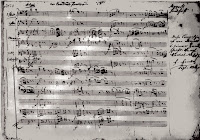December 16th has more than one birthday of interest to us Regency-ers. Along with Austen, it’s also the birthday of Beethoven, born in 1770. Five years before Jane. (It’s also the birthday of my mother, but that’s probably only of interest to me, who still has to find her a present. Jane and Ludwig aren’t quite as picky).
I had hoped to make this post about Jane’s own interest in the music of Beethoven. After all, we know she enjoyed music, and that he was one of the leading composers of the era. Alas, according to the Jane Austen Memorial Trust, which has cataloged over 300 pieces of music-related material belonging to Jane, she owned very little by Beethoven (or Mozart, or Handel, or any of the other composers we listen to most today). She owned a lot of pieces by such non-household names as Pleyel, Dibdin, Sterkel, and Kotzwara. So there goes my theme. But here are a few other little factoids I found on my search!
In 1811, Jane Austen published “Sense and Sensibility”; Beethoven first performs his Piano Trio in B-flat
In 1813, “Pride and Prejudice”; Wellington’s Victory
1818, Mary Shelley publishes “Frankenstein”; Beethoven the Piano Sonata #29 (Hammerklavier) (not Austen, I know, but interesting!)
The 1995 version of Pride and Prejudice featured some Beethoven. At the Phillips’ party, Mary plays “Nel cuor non mi santo”. At Pemberley, Georgiana plays “Andante Favore.” And according to the 2005 Pride and Prejudice website, the score was inspired in great part by Beethoven’s piano sonatas, and performed by pianist Jean-Yves Thibaudet with the English Chamber Orchestra in that sort of style. I couldn’t find any info on “real” Ludwigian pieces they might have used, but they did use Purcell at the Netherfield ball.
I also saw that at the Jane Austen Evening our own Cara will be attending in January, there is a visit from “Herr Beethoven” scheduled as well.
Happy birthday, Jane and Ludwig! Hopefully some of you will have other nuggets of factoids to share.







